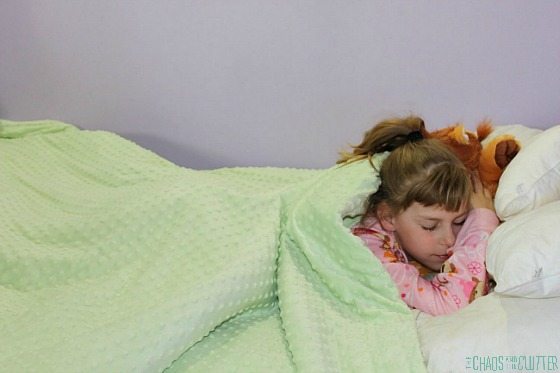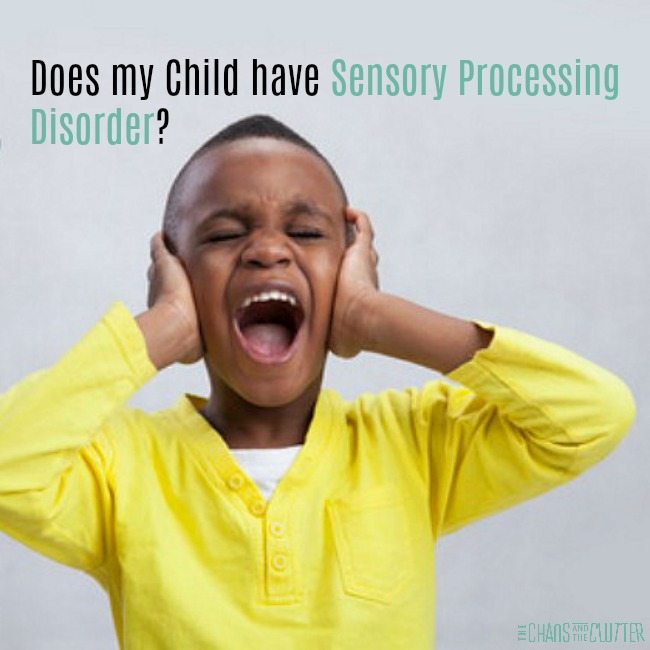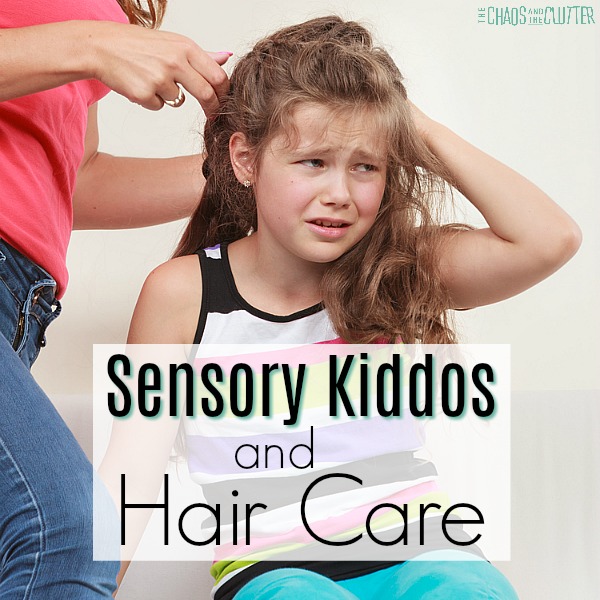It is common for children who have sensory issues to have trouble with sleep. For some, it’s trouble falling asleep (this is more common) while for others, it’s trouble staying asleep. Making changes in your child’s bedroom can make a big change. Sometimes, they may need a special sensory bed to help them sleep.
As a mom of kids with sensory challenges myself, I can tell you that improving their sleep has made a HUGE difference. Healthy sleep patterns lead to improved concentration and cognition, better moods, reduced stress, and better overall mental and physical health. Over the years, we’ve discovered some sleep solutions for sensory needs that truly work.
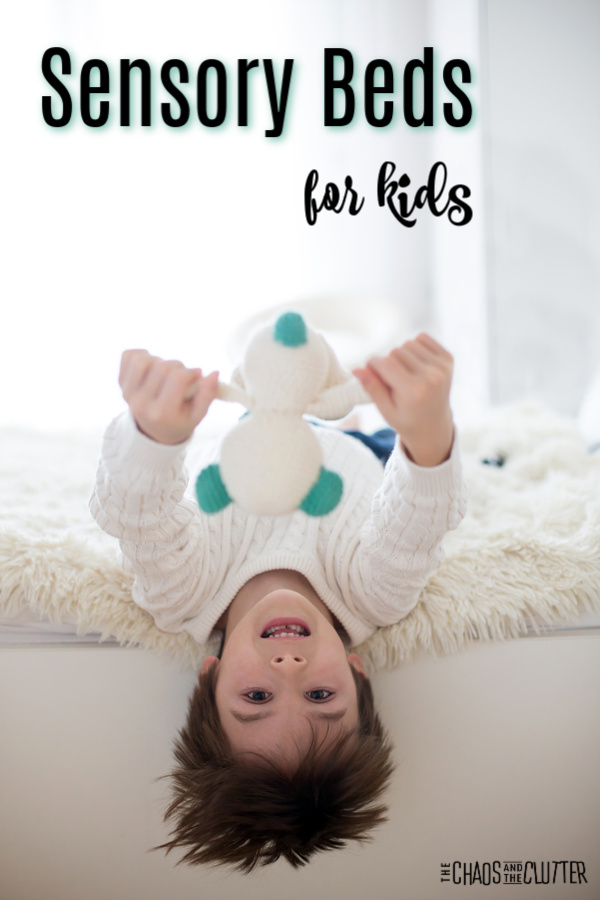 There are changes that can be made to bedtime routine, the sensory environment, and diet that positively impact a child’s ability to sleep even with sensory issues. You can read those suggestions here. If you have made those changes to your child’s room and nighttime routine and are still not seeing improvements, it may be time to resort to more drastic measures such as changing your child’s bed.
There are changes that can be made to bedtime routine, the sensory environment, and diet that positively impact a child’s ability to sleep even with sensory issues. You can read those suggestions here. If you have made those changes to your child’s room and nighttime routine and are still not seeing improvements, it may be time to resort to more drastic measures such as changing your child’s bed.
Begin by taking a look at their room and seeing if there are simpler changes you can make. Declutter, minimize visual and auditory distractions, and ensure that there isn’t anything bothering them in their room from a sensory standpoint.
Look for things such as:
- shadows or lights
- areas of clutter
- unusual textures
- smells
- sounds
- cold drafts or heat coming up through a vent
I like the suggestion here of playing a version of I-Spy with your child in their room so that you can better understand what they see and what may be affecting their ability to sleep.
When it comes to bedding, avoid busy patterns, rough or scratchy fabric, or tags.
Some children are very sensitive to any light whereas others need some light. There are some soothing night light options or you can string coloured LED lights along their ceiling (two of our kids have opted for this option and LOVE it). For kids who usually prefer the dark but are sometimes afraid, use glow sticks. They are inexpensive and give off a soft light. 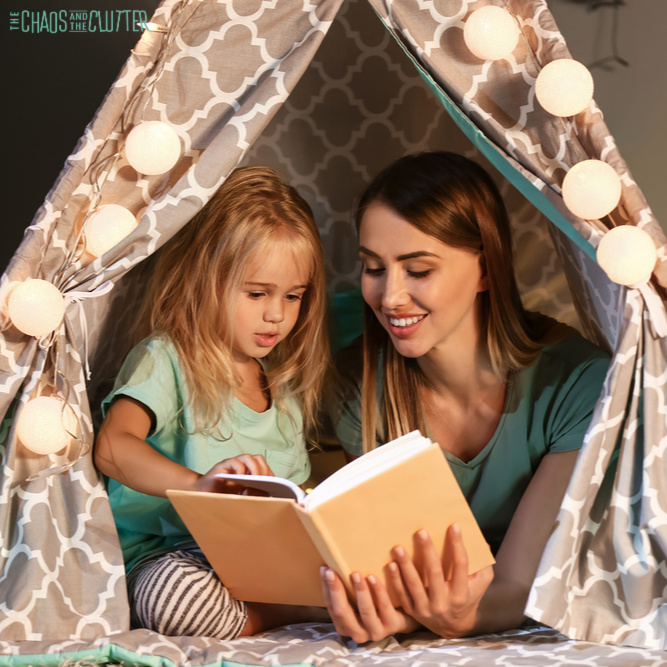
Sensory Beds:
Once you’ve made the room as conducive as you can to sleep, if your child is still struggling at night, consider if making a change to their bed may be helpful. Start with the minimum which is the sheets and blankets before switching out the actual bed.
Bed Sheets:
Many kids respond well to the feeling of pressure (proprioception) that a Lycra sheet provides. You can purchase one or make your own. These stretchy sensory sheets help kids feel more secure and enable them to get their proprioceptive needs met. For many kids, this means a better night sleep.
Blankets:
In much the same way as the Lycra sheet provides proprioceptive feedback, weighted blankets can help children (and adults for that matter!) to get a better night’s sleep. I suggest trying the sheet first as weighted blankets can be expensive and are not recommended for use with very young children.
Before investing in an “official” weighted blanket, you may want to have your child try sleeping under heavier blankets that you have or borrow from friends.
My aunt made my boys thick quilts out of old jeans with another fabric on the back. Between the denim, quilting batting, and the other thick fabric, they are very heavy blankets. These worked well for us to test out which kids would benefit from having a weighted blanket.
Generally, experts recommend that a weighted blanket be 10 percent of a child’s body weight plus one pound. Always consult with your child’s doctor before using a weighted blanket. They should NEVER be used with babies or toddlers under the age of 2.
Privacy Tents:
There are many types of privacy bed tents. Some are designed for fun or play, but many are designed with sensory struggles in mind. When a child is inside a bed tent, they are able to shut out other distractions. It provides a feeling of security as well as eliminating a lot of the extraneous sensory input in the room.
If presented as a fun “campout at home” option, kids are usually excited to give the bed tent a try. Even for those who don’t like confined spaces they can work as there are some types that offer the option of keeping one side open.
Hammock or Swing:
While the thought of swinging or swaying while I sleep makes me feel nauseous, for sensory seekers, it can be just what is needed. Be sure to consult your child paediatrician before allowing your child to sleep in a swing nest or hammock.
Privacy Pop Bed Tent (Twin) Privacy Pop Up Warm Breathable PitchBlack
Privacy Pop Up Warm Breathable PitchBlack Kids Dream Bed Tent Space Adventure
Kids Dream Bed Tent Space Adventure Bed Canopy
Bed Canopy Hanging Swing Nest with Pillow
Hanging Swing Nest with Pillow Cotton Hammock
Cotton Hammock Sensory Bed Sheet for Kids
Sensory Bed Sheet for Kids Weighted Blanket
Weighted Blanket
If you’re looking for more practical strategies that work for your child’s everyday sensory needs for things like picky eating, clothing issues, difficulty regulating emotions, meltdowns, and challenging behaviours, you’ll want to read Sensory Processing Explained. 
Join me for a free 5 part email series Sensory Solutions and Activities (just pop your email into the box below) and get a printable list of 175 Great Sensory Ideas.
You may also be interested in reading:
Sleep Solutions for Kids with Sensory Needs